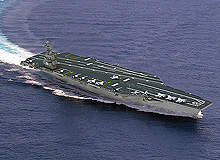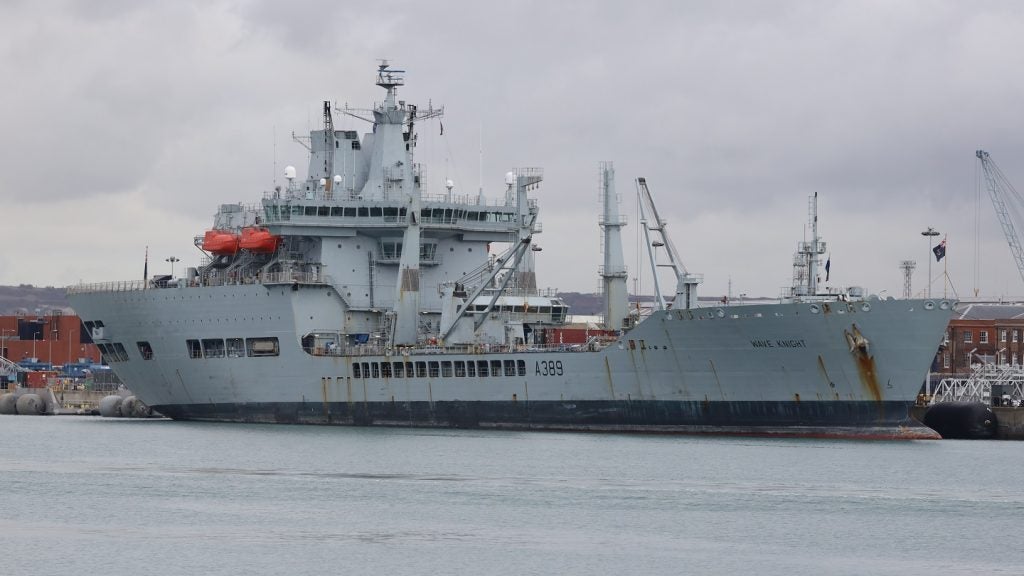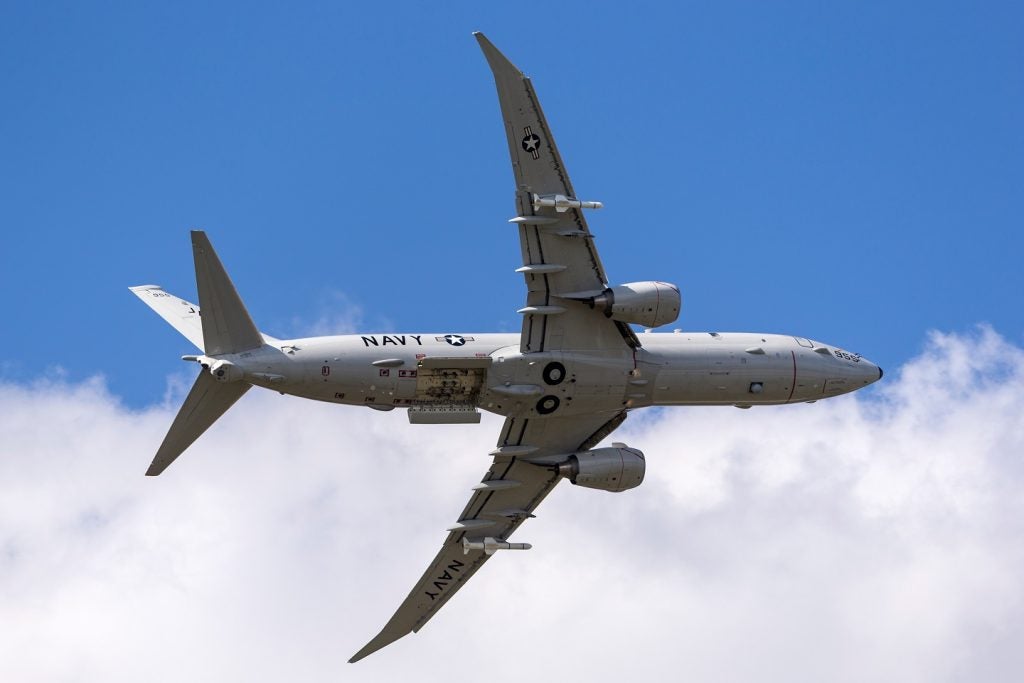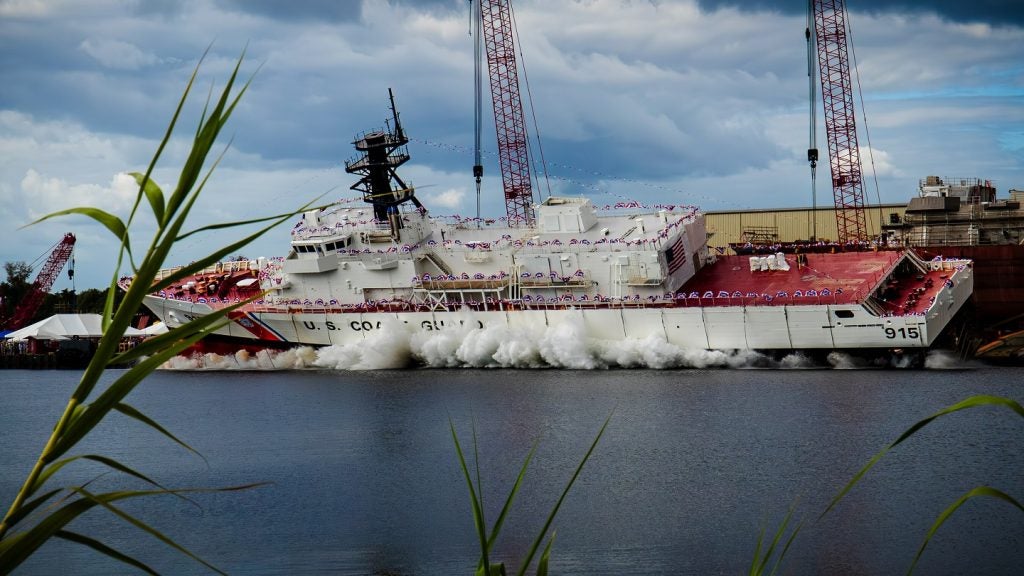
While some have suggested that the aircraft carrier is an expensive and increasingly irrelevant relic of the Cold War, the world’s navies clearly disagree, and are adding carriers to inventories at an unparalleled rate.
This is not just among the ‘old’ naval powers of the UK, France, Russia and the US. The emergent economies of China and India are also engaged in new carrier programmes to bolster their power-projection capabilities, while other nations too are well aware of the evident regional benefits to be gained from sea-borne airpower.
The new US super-carrier
With more carriers than the rest of the world’s forces put together, the importance that US strategists afford these platforms both as primary military assets and as major tools of global diplomacy is obvious. Pride of place today undoubtedly goes to the nuclear-powered Nimitz Class, the last of which is not scheduled to be decommissioned until 2058. However, these are set to be eclipsed by three Ford Class vessels, scheduled to enter service between 2015 and 2021.
The need to support high sortie rates has formed one of the biggest influences on the new design, and a number of changes have been made to improve aircraft handling, storage and manoeuvring, while making the island smaller and moving it further back has generated deck space for centralised refuelling and rearming.
How well do you really know your competitors?
Access the most comprehensive Company Profiles on the market, powered by GlobalData. Save hours of research. Gain competitive edge.

Thank you!
Your download email will arrive shortly
Not ready to buy yet? Download a free sample
We are confident about the unique quality of our Company Profiles. However, we want you to make the most beneficial decision for your business, so we offer a free sample that you can download by submitting the below form
By GlobalDataSince the time taken to rearm an aircraft is arguably the single largest limiting factor on turn-around, there has also been a fundamental rethink of the routing of weapons to the flight deck, with robotic handling devices used extensively to manage ordnance movement.
See Also:
With 50% redundant power capacity and an in-built readiness for technology upgrades – including the possible incorporation of directed-energy weapons and dynamic armour – when the USS Gerald R Ford is finally inducted, it is expected to be one of the most futureproof vessels in the world.
The UK’s Queen Elizabeth
On the other side of the Atlantic, despite earlier uncertainty over their future during the government’s Strategic Defence and Security Review, work is underway in a currently carrierless UK to produce the new Queen Elizabeth Class, two ships that with a displacement of 65,600t, will be the Royal Navy’s largest warships ever.
The review did, however, introduce some important changes. The second vessel – HMS Prince of Wales – will be kept in reserve and not be fully kitted out, while the design has been altered in the light of the decision to purchase the F-35C variant of the joint strike fighter (JSF), instead of the short take-off and vertical landing (STOVL) version originally intended.
This shift makes sense operationally – the F-35C is a more capable aircraft, with a greater range and payload than its STOVL counterpart – and it costs less to purchase. It is also the US Navy variant; fitting the catapult and arrestor system and angled flight deck that it needs will simplify slotting these vessels into US carrier groups and allow the US and other Nato partners to operate their aircraft from the QE Class carriers in joint missions.
Nevertheless, controversy continues to dog the project, with the UK National Audit Office expressing deep concern in a report published on 7 July 2011 that the MoD may not yet fully appreciate the impact of the changes, which will leave the UK without a carrier for the best part of a decade. With HMS Queen Elizabeth now unlikely to enter service much before 2020, the defence treaty signed last November with France to share carrier resources looks like a very prudent move.
France, Russia and the Mistral
Meanwhile in France, where a final decision awaits over the construction of a proposed second carrier to complement the Charles de Gaulle, the current focus is squarely on the Mistral.
Although this class is strictly speaking one of a burgeoning group of multirole, amphibious warfare vessels, having originally arisen as an interventionary helicopter carrier (porte-hélicoptères d’intervention) to satisfy the changing demands of French amphibious operations doctrine, it remains true to the fundamental carrier concept. Now dubbed bâtiments de projection et de commandement (BPCs), these vessels may have only half the displacement of the Charles de Gaulle, but as maritime air platforms, their potential for power projection largely belies the fact, and that is something that has not escaped other navies.
In June, after lengthy talks – and to the disquiet of some Nato allies – France signed a deal to supply Russia with two Mistral Class vessels, and two more are planned to be built in Russia in due course.
A number of other countries are also said to be showing interest in the class, including the former French colony of Algeria, along with Brazil, Canada, India, Malaysia, South Africa, Sweden and Turkey. How many of these will ultimately turn into export sales remains to be seen, but it seems that at a time when many have questioned the affordability of ‘true’ carriers, their smaller sisters offer clear appeal.
China and India: refurbishment and indigenous production
Aircraft carriers make potent symbols of national status, and for the rising powers of China and India, their attraction is obvious. In June, China formally announced the construction of the country’s first – the refurbished Soviet-era Varyag – officially confirming one of the worst-kept military secrets in modern history, with few people truly believing the story put about when the partially finished ship was purchased that it was destined to be a floating casino. Work on the 300m vessel – reportedly renamed the Shi Lang – is thought to be nearing completion at the Dalian shipyard and sea trials are expected to begin later this year.
It will, of course, take time to establish the skills necessary to operate the new carrier, leading to speculation that the refitted Varyag’s largest role – aside from trumpeting Beijing’s ambitions – may be to provide crew training for up to four further carriers within decades. These, however, are likely to be entirely home grown, and some suggest, much larger.
The Indian Navy has taken a broadly similar course to carrier acquisition, purchasing its only currently active carrier, INS Viraat (formerly HMS Hermes), from the UK in 1987 and the Kiev Class Admiral Gorshkov (renamed Vikramaditya) in 2004 from Russia, where its refurbishment is still underway. After a series of delays, this vessel is due to be delivered in late 2012 or early 2013; little more than a year later, it is set to be joined by India’s first indigenously built carrier, the INS Vikrant, which has been in construction since 2008.
Both vessels employ a short take-off, barrier-arrested (STOBAR) design and will carry the Indian-designed light combat aircraft alongside MiG-29Ks. A second – and more formidable – Vikrant Class carrier is planned to follow, which would finally allow Delhi to realise its long-held goal of a three-carrier fleet.
While the cost and relevance debate will continue to rage, and despite advances in anti-ship ballistic missile technology, the future of aircraft carriers seems assured. As the renowned naval strategist and historian Norman Friedman put it in the Royal United Services Institution’s Defence Systems publication, “nothing else on land or sea offers what they offer, and what they provide is absolutely essential.”







